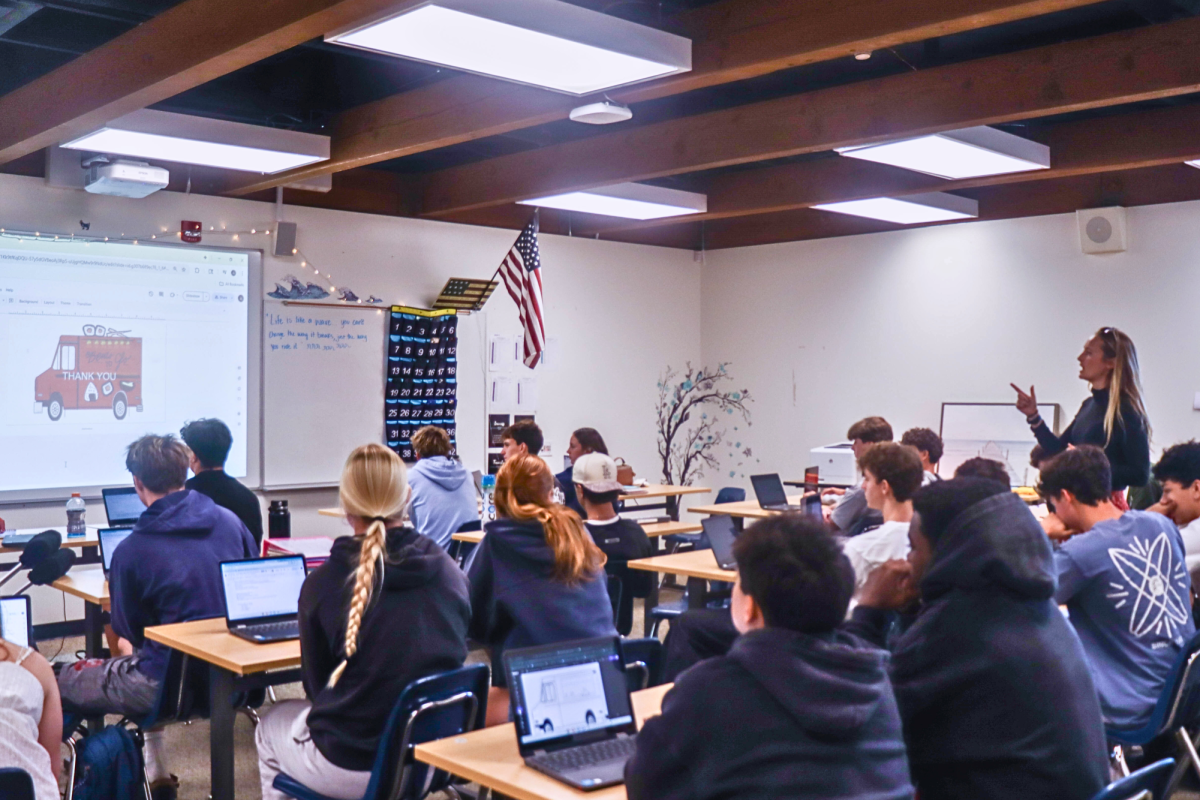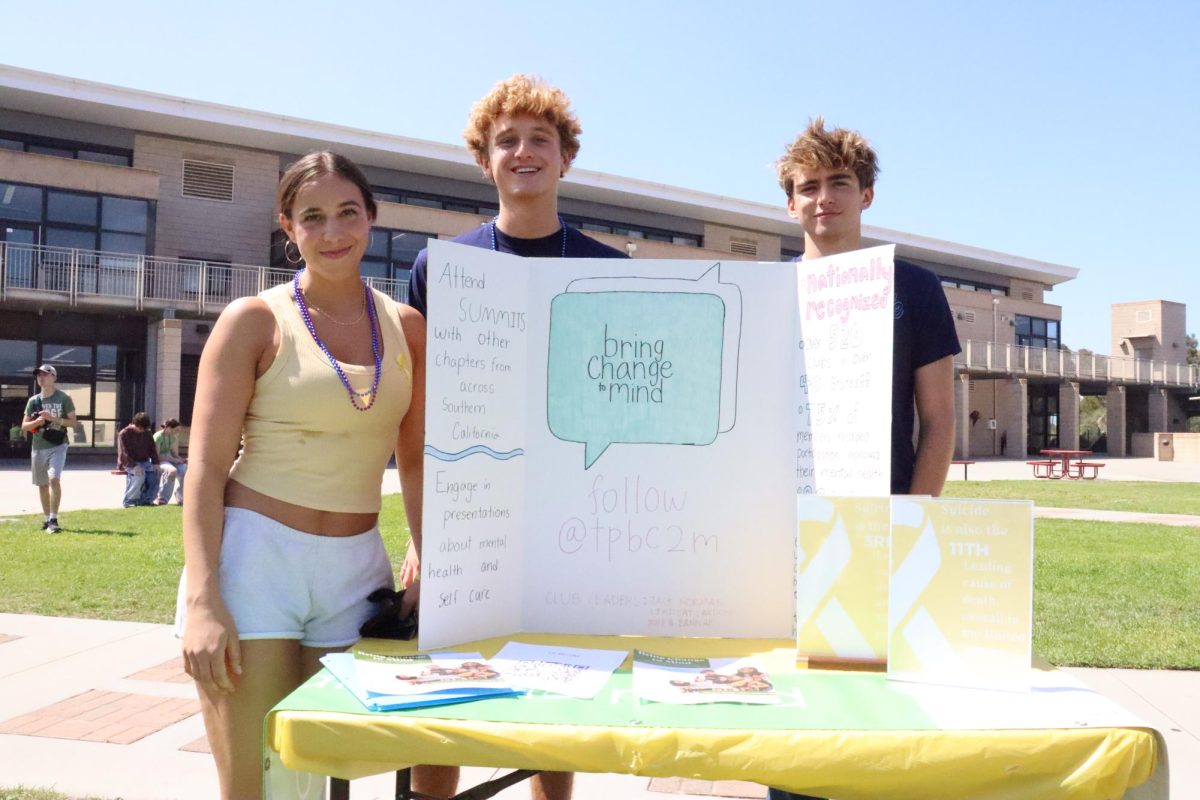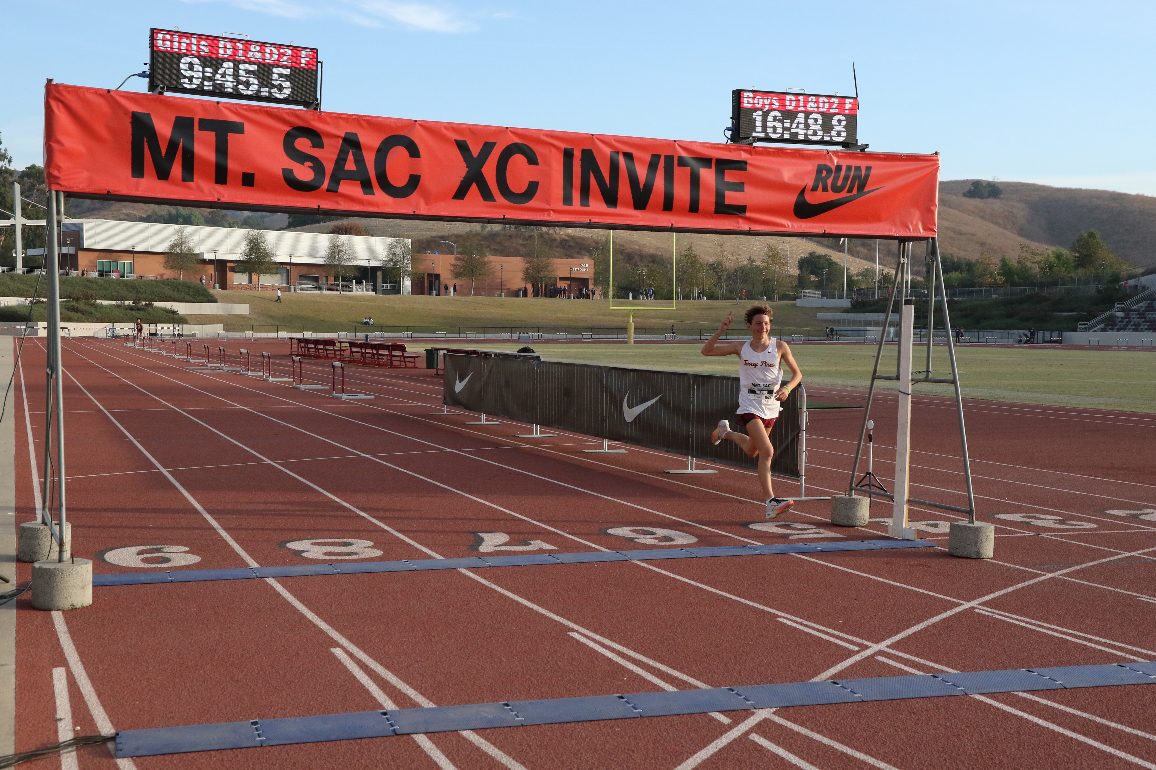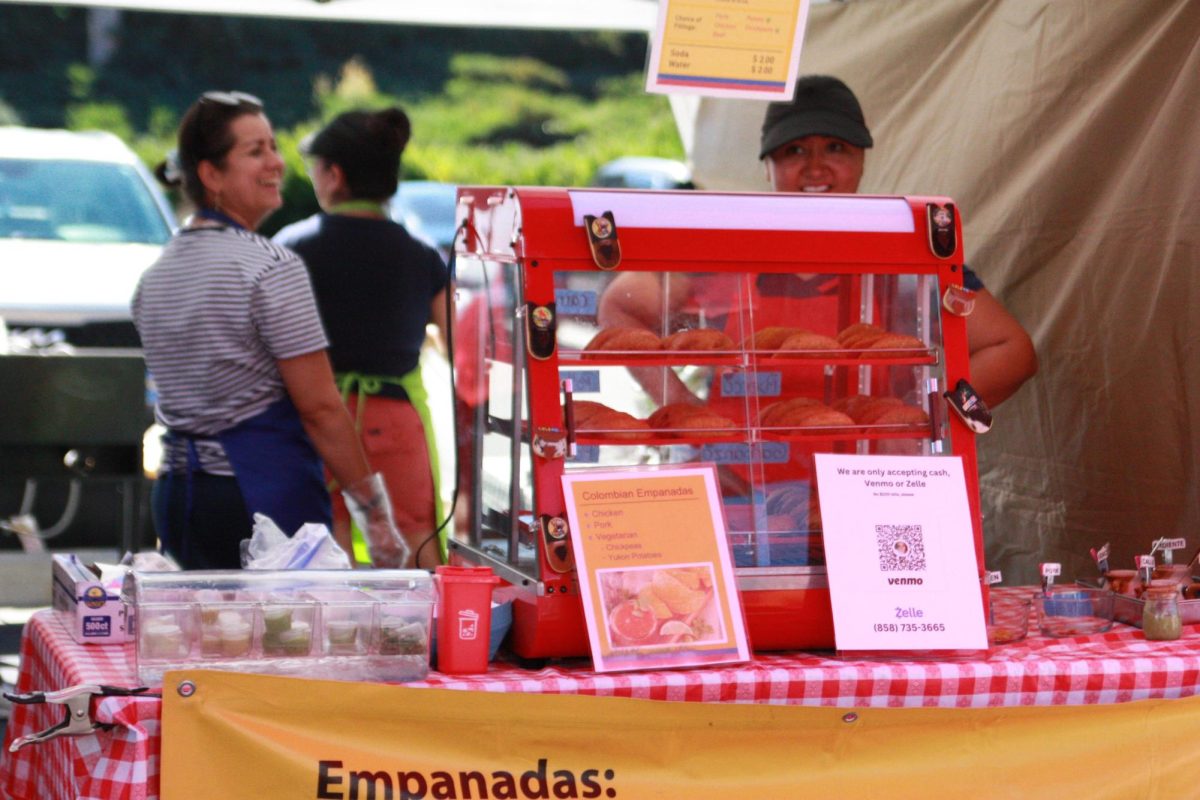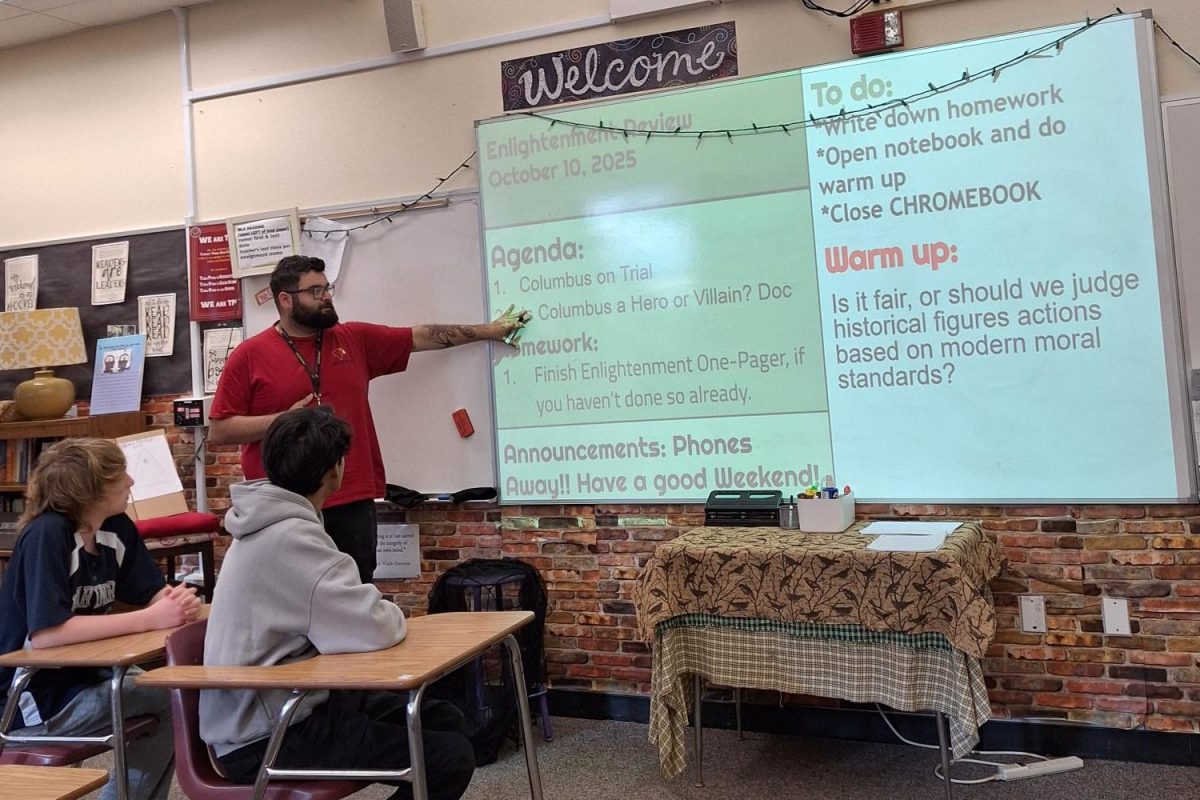Ticket to learn
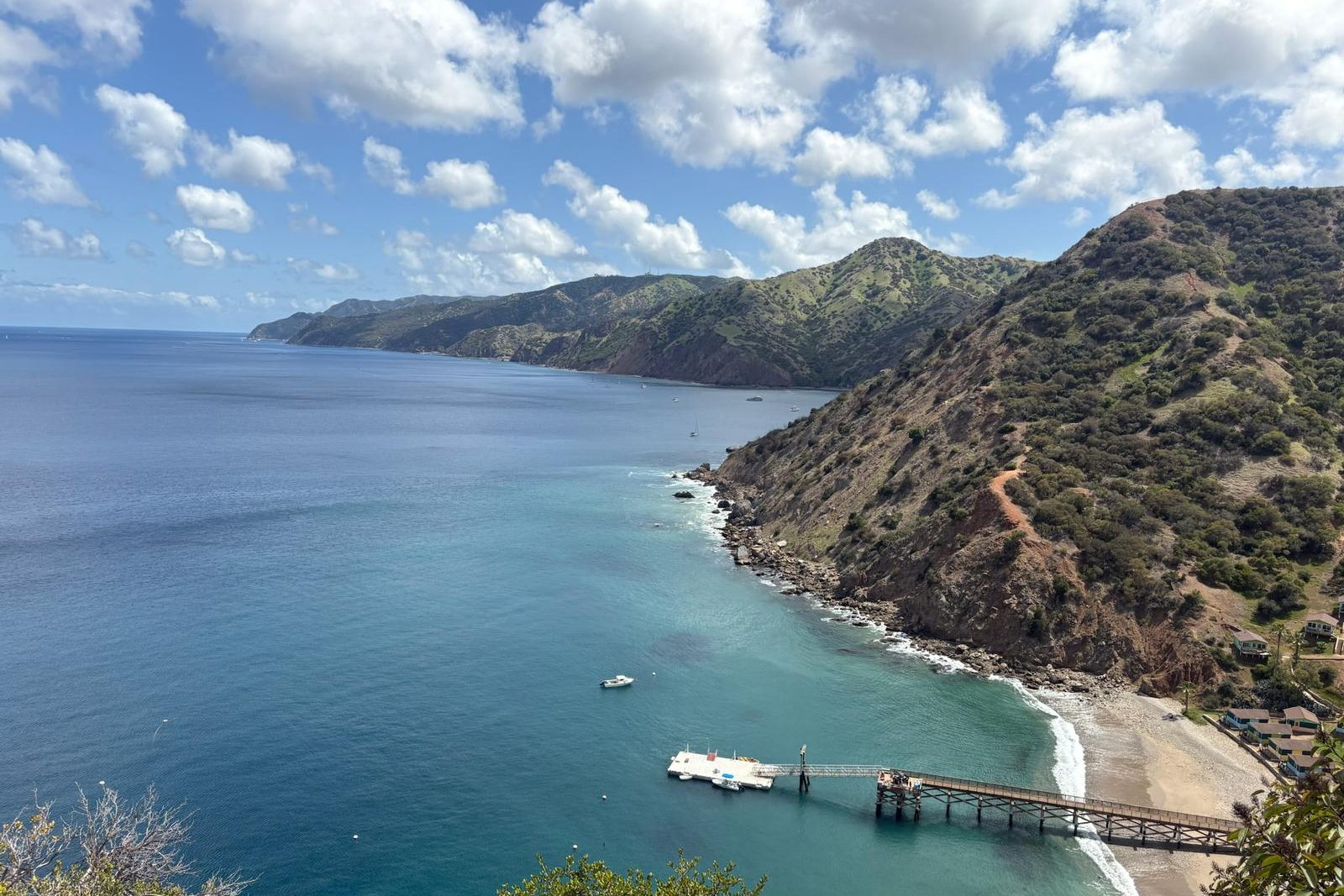

Colorful schools of fish flitted against the deep blue background as students swam among tendrils of kelp dancing in the currents. However, these students weren’t on vacation; they were here to learn.
From April 25 to 27, students from AP Environmental Science, AP Biology and Marine Biology embarked on a journey to Catalina Island to enrich their understanding of concepts taught in the classroom through real-life experiences.
“You learn things in class from a textbook, but when you see them in person, it’s a lot more impactful,” AP Environmental Science student Chelsea Roffey (12) said.
They also learned about the environmental issues impacting biodiversity on the island, such as pollution.
“It was really educational, Cassidy Taylor (12) said. “It made me think about my own environmental footprint.”
While Taylor is not currently enrolled in one of the above-mentioned science courses, the trip was open to students from all classes. On the trip, students engaged in activities such as snorkeling, rock climbing, kayaking, and aquarium lessons.
“[One of] my favorite parts was probably the hike, because we went to the top of a mountain, and there was a really cool view of the ocean,” Roffey said.
There were also a variety of lab experiences with topics ranging from sharks to plate tectonics, the latter being a topic Taylor previously explored in chemistry.
“We learned about domoic acid … there’s a type of algae that produces it … it’s been affecting sea lions,” Roffey said. “On the last day, there was a sea lion that came up on the beach and it was bobbing its head because of the neurotoxin. It was on the beach for a good hour.”
While learning about the challenges that the animals of Catalina Island faced, the students had their own to contend with.
“It was pretty, but also cloudy and rainy, and it was super cold a lot of the time,” Taylor said. “When we’d get into the wetsuits they were already really cold … it wasn’t the most pleasant experience.”
These challenges built resilience.
“At first we were really put off by it and only able to focus on how uncomfortable we were,but by the last snorkel, we were dancing and singing and trying to make it more fun for ourselves,” Taylor said. “It ended up making it more enjoyable.”
Roffey had Michael Rall as her Honors Chemistry and AP Environmental Science teacher, and found herself going on the trip because of her love for environmental science.
Rall also encouraged students to use the experience to reflect on how they affect their environments.
While the students who attended found the trip inspiring and educational, a lack of student sign-ups put both this trip and future trips in jeopardy.
“I’ve run similar trips for two decades now, but we can’t keep going without student interest and commitment,” Rall said.
Field trips are an unforgettable part of childhood — elementary days filled with images of friends playing chopsticks in yellow school buses and chaperones constantly counting excited kids. These integral opportunities become less frequent with each ascending grade level. On March 7; however, students in Lisa Tellers’ AP Art History class were able to go on a field trip to Balboa Park.
“I feel like we don’t get a lot of field trip opportunities in high school,” Morgan Danko (12), who went on the trip, said. “It’s something that’s harder to pull off when you have a bunch of classes that you have to take in a year instead of elementary school where you just have one to worry about.”
The tradition began with former AP Art History and AP World History teacher Lars Trupe.
“We started the field trips after taking over from our legend Mr. Trupe,” Tellers said. “Mr. Trupe taught AP Art History for more than a decade. He gifted the program to Mr. Cornforth and myself. We are three years now, we eased into this process.”
In the first year, the trip took students to the Beyond King Tut Museum at the Del Mar Fairgrounds, while the past two years have featured visits to Balboa Park. Students were able to visit the San Diego Museum of Art before exploring the rest of the park.
“After the official museum tour, students were encouraged to go to the Timken Museum [which is free], which has Byzantine Art and some other masterpieces,” Tellers said. “They were also encouraged to go to the Mingei Museum [which is free with a student ID], which had a super cool indigo cloth exhibit. The students had about an hour to tour the museums, the new Botanical Gardens, the Organ Pavillion or just to enjoy sitting in nature and enjoying some snacks.”
Not all things went according to plan, however.
“On this day, rain was in the forecast which worried me about having a picnic in the grassy areas,” Tellers said. “I had to ask last-minute to change the itinerary. I loved that they got an hour to tour around Liberty Station and indulge in whatever food they wanted.”
Danko appreciated the opportunity as a whole.
“Being able to go to Balboa Park, which is kind of a central hub for arts in San Diego, and going to the museum and seeing all of these pieces and styles that we talked about in class is definitely exciting,” Danko said.
The students were not the only ones who enjoyed the trip.
“Mr. Cornforth and I love seeing students happy, talking and appreciating art,” Tellers said. “Mr. Cornforth, Ms. Huntsberger and I also enjoyed time being together. Between the three of us, we have taught or currently teach a lot of the AP art students. They were jazzed to have all three of us on the trip.”
Beyond being a fun opportunity for the students and teachers, Balboa Park offered enrichment in terms of the curriculum as well.
“I feel like I got a better understanding of the concepts that we were learning,” Danko said. “It’s easy to talk about a specific art style from a historical period, but being able to sort of go and visualize it and see paintings from that period just helps a lot with understanding the content … I think field trips are really essential to a lot of classes. I’m sad we don’t get to go on as many because I think hands-on learning is very important.”
Hyun shared the same sentiment.
“I think it’s a good experience for everyone to just go to a museum and actually see art because when you’re just learning the subject in the classroom it doesn’t actually come towards you,” Hyun said. “We saw some things we learned in class in real life, and I think it helps.”
The value of taking the class lasts well beyond high school itself.
“Now that the students have learned the standard skills of AP Art History — content, context, form, function and themes — they have the tools that allow them to see what we have discussed in class,” Tellers said. “I remind them that this class helps out with travel in the future. Many of our students have the desire and want to study abroad, or go visit a piece that we talked about.”

Not many field trips cross an entire ocean. Last summer, for the first time in over a decade, students from the Japanese National Honor Society and the Japanese Program at the school went on a journey that did just that.
Japanese teacher Sato Umabe previously led three student trips abroad and was planning a fourth for April 2011, until the Tōhoku earthquake and tsunami forced her to cancel.
“It took me several months for the students to get refunded … it was a battle against the company,” Umabe said. “… That kind of made me very scared of the trip, and then I have not planned any trip since then.”
The idea of an overseas trip reemerged when in 2023, Umabe arranged online sessions between her students, and a group of Japanese tour guides who had lost work during COVID-19.
“They loved my students,” Umabe said. “At the end of the session, they told my students, ‘We’d love to have you here in Japan,’ like ‘please come visit.’ And then my students kept asking me, ‘Can we go? Can we go? Can we go?’”
In response, Umabe asked her students to create and present their dream itinerary.
“I told my students that … if the presentation moved me, I might consider,” Umabe said. “… And, it was a really great presentation.”
JNHS secretary Kylie Lai (12) and JNHS Vice President Juan Camacho-Ortiz (12), helped create the original itinerary. In June 2024, after a year of planning and preparing, the trip finally became a reality. Students from TPHS and Canyon Crest Academy spent 11 days in Tokyo, Kyoto, Nara and Wakayama, chaperoned by Umabe and CCA Japanese teacher Donald Quinn.
“Tokyo, Kyoto, Nara are the tourism spots, so a lot of people will go,” Umabe said. “Wakayama is not a popular place … but I am from Wakayama. So, I wanted to take my student to my hometown.”
Visiting Umabe’s old high school, Chiben Gakuen Wakayama, was a highlight for Lai.
“We got to sort of sit in on a couple classes,” Lai said. “So we split up and I sat in the physics class … you can kind of see their curriculum is sort of similar, and all the students are super, super sweet.”
In Wakayama, Umabe reunited with her former English teacher, which was something she hoped to do in her time as an educator.
“He found out I became a Japanese teacher here in America … with the knowledge that he gave me, and I was able to introduce my students,” Umabe said. “… It was on my checklist that I wanted to bring my students to where I came from. And then, especially if I [had] a chance to meet my English teacher in high school, I wanted to thank my teacher.”
Between the more rural character of Wakayama, the historic temples and Torii gates in Kyoto and the urban areas of Harajuku, Shibuya and Shinjuku in Tokyo, students experienced diverse aspects of Japanese landscapes and lifestyles.
“My favorite part of the trip was when we got to explore the cities by ourselves,” Camacho-Ortiz said. “We would go to restaurants or stores … I’m in AP now my senior year and when I took the trip, I just finished Japanese 3, so it was cool being able to use the language we’ve been learning.”
After spending time in Japan, Camacho-Ortiz gained insight into the distinctions between the U.S. and Japanese lifestyle.
“I’ve traveled a lot of times with my family but that’s definitely the first time I’ve come back from a trip and realized how different some people’s lives are,” Camacho-Ortiz said. “Not like in a bad way or anything, like they have it better off or we have it better off, but it was just cool seeing their lives there … small things like that, like what you do for fun in your spare time or how you get around were different, but I feel like that makes a big difference.”
Both Lai and Camacho-Ortiz experienced what it was like to be immersed in the language and culture.
“When I was in Kyoto, a lot of my friends wanted to get a haircut in Japan because, like, they know how to cut with Asian hair, and we had to figure out how to communicate with the hair stylists in Japanese,” Lai said. “And, it’s really good practice. And, I think if you’re trying to learn a new language, the only way you can really practice it is with natives, because I think in school it’s very robotic.”
For students, the trip to Japan was a formative experience that continues to shape their perspectives.
“It kind of like motivates you to want to learn the language more,” Camacho-Ortiz said. “Like, it was really exciting for me being able to use what I had learned in the last three years in real situations. So it makes you appreciate what you’re learning in class more. And, after I came back from the trip, I found myself more interested in learning in class than I was prior to it.”
Umabe also observed the trip’s impact on her students.
“We talked about AP grammar and also, like the kanji … they were studying and communicating there every day,” Umabe said. “They had to talk to the people, and then we had a lot of free time. So, like, they were very impressed by themselves, and [they were like] ‘sensei! I was able to talk’ … And, I think it helped them to build their confidence, and so that they know what they learned can be used in the real life.”
In Japan, the group formed lasting connections. The tour guides from the JNHS cultural exchange showed the students around Tokyo. And at Rikkyo University in Tokyo, which Umabe attended, the students met a college student with whom they continue to connect.
“This year, one of the activities that JNHS did was meeting him and his friends online … and [learning] about the college life,” Umabe said. “So real life experience is very important and very encouraging for students to continue learning.”
Both Lai and Camacho-Ortiz hope to return to Japan. Camacho-Ortiz is interested in studying abroad for a semester or year and Lai, who will visit with friends this summer, hopes to own property there someday.
“My biggest takeaway is definitely don’t be scared to practice your language in another country,” Lai said. “That’s the one thing I regret … I didn’t end up practicing Japanese as much as I wanted to … definitely don’t be afraid to embarrass yourself with the language.”
However, field trips, and overseas trips even moreso, are becoming rarer.
“20 years ago, there were more teachers who were taking students abroad because it was easier back then, because the school, the district, was more supportive in approving us,” Umabe said. “Then after that, they still support us, but they say, like, if you do it’s on your own. We have nothing to do with it. That kind of risk that I think that’s why we don’t see anymore and stuff. Liability issue … has [become] very challenging to the teacher, and it scares me.”
For Umabe, the trip was personally significant.
“The main goal of this trip was authentic experience for the students, and I wanted to see how much Japanese they can use with the local people,” Umabe said. “But at the same time, personally as I am getting close to the end of [my] teaching career, because I have been a high school teacher for 25 years, … I wanted to go back to my root … and I wanted to take my students to where I came from.”
Your donation will support the student journalists of Torrey Pines High School. Your contribution will allow us to purchase equipment and cover our annual website hosting costs.




